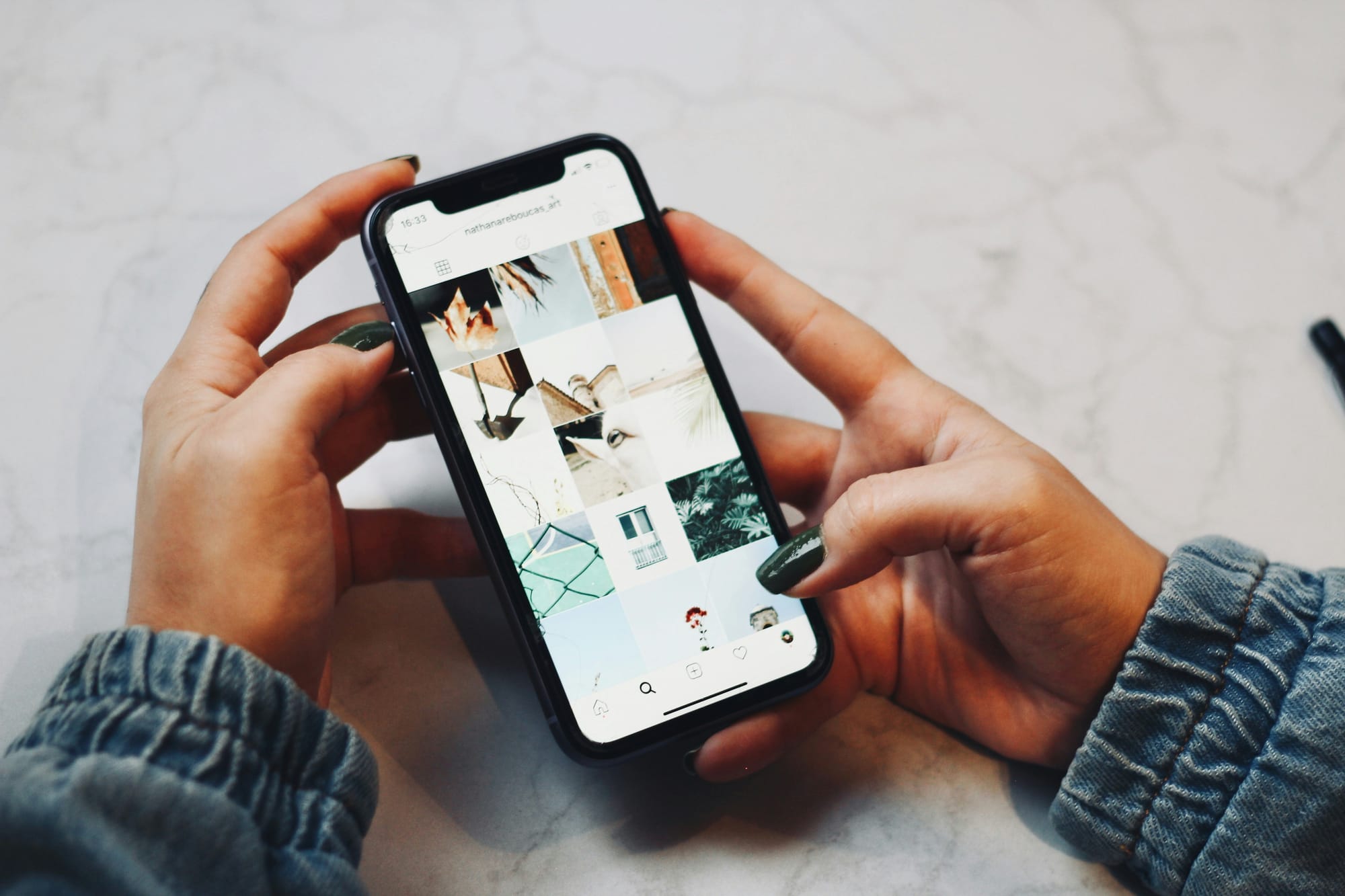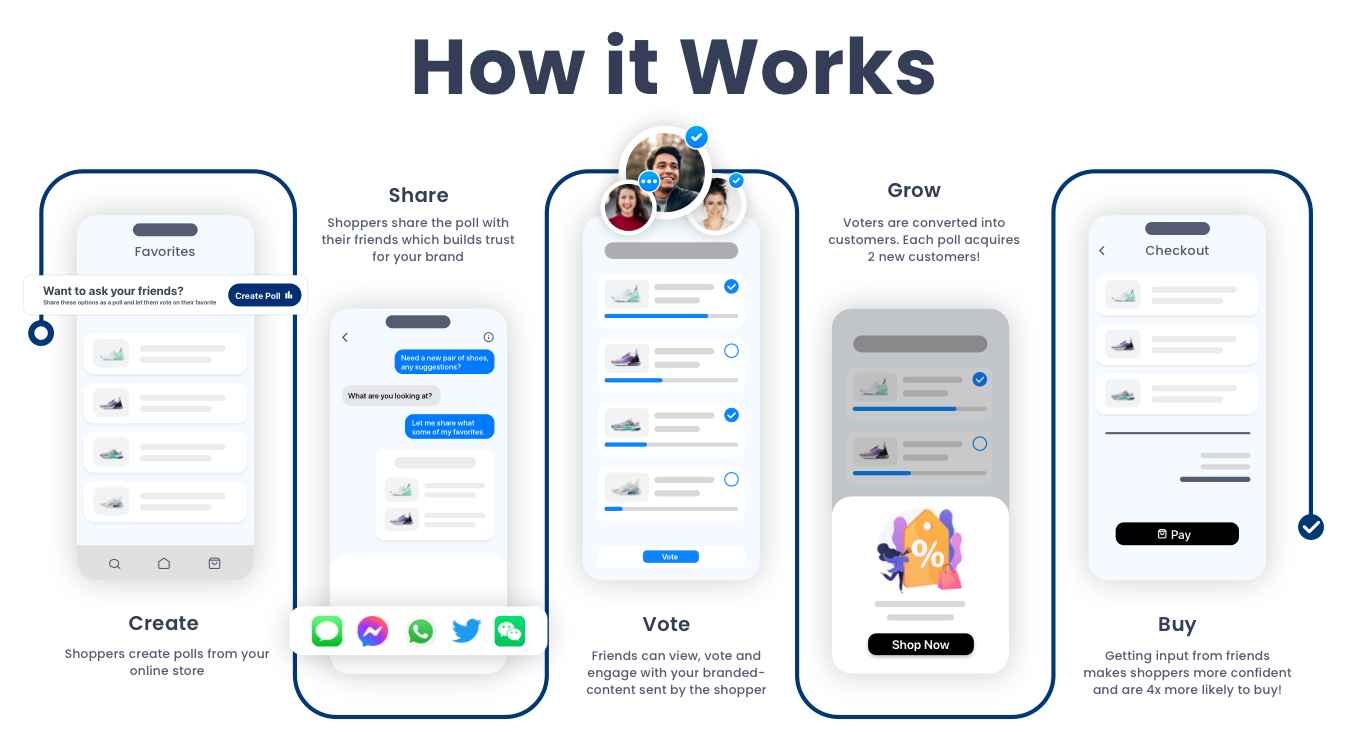Blog Post: What is Social Shopping?

You may not realize it, but you've probably already had some experience with social shopping.
Social shopping is the intersection of your social network and online shopping, and it can be critical to the decision-making process. It's the part of online shopping where users engage others in their shopping experience, and it happens in group chats, in comment sections, in the sharing of posts, and more.
It's also important to note that social shopping is different from social commerce (selling products and services directly through social media). While the two may appear to be interchangeable terms, the mechanisms of social shopping extend beyond Instagram, Facebook, and even TikTok.
Why does social shopping work?
Think of all the times you've gone to a mall or box store with your friends. You pick things out and ask each other for advice on style, fit, color, and more. It's a behavior that just kind of naturally happens—people want to get input from their friends before they buy something, so they solicit it.
And it's a behavior that still takes place when purchase decision-making moves out of dressing rooms and into online carts.
Social shopping works because it's intrinsic to how we shop and make decisions. Think back to that shopping trip–if your friends all loved a shirt you picked out, were you more or less likely to buy it?
The truth is, there's a good chance you'd buy it. And that's because we're all influenced by the people close to us, by their insights, recommendations, and purchases. It's been proven again and again that friends and family hold a significant influence over what we buy:
88% of consumers trust recommendations from people they know more than any other form of marketing.
82% of Americans seek recommendations from friends and family when making a purchase of any kind.
77% of consumers were more likely to buy a product if their friends recommended it.
And it's that influence that's at the heart of social shopping. The group chat? The comments section? That post you got sent? They're all ways we share and solicit our opinions on potential purchases and more.
Which means there's a big opportunity when it comes to facilitating social shopping for your customers. But what does implementing a social shopping strategy look like?
How Amazon, Walmart, use social shopping
With a continuing trend away from brick-and-mortar shopping, brands are exploring new ways to build a similar experience into their online stores. And some big name companies are leading the way with their own social shopping features.
Amazon’s “Consult-a-Friend”

At the end of 2023, e-commerce giant Amazon announced that it was testing a new mobile shopping experience called “Consult-a-Friend.” The experience allows shoppers to send a message to people whose advice they want to receive and includes a link where friends can react to the product shown using emojis and add commentary.
These type of features help keep users in the app and bring their friends in, too. They're tools that encourage customers to get the feedback they need to make a purchase while streamlining otherwise frustrating feedback channels like group chats.
Ultimately, social shopping features like those implemented by Amazon and Walmart decrease the friction of a process that we already see happening organically.
And it's something worth implementing at any size.
Social shopping for your e-commerce site with Shop with Friends
We know that people seek validation from friends while shopping online, but how do you turn this behavior into something beneficial to your brand?
The best place to start is by making it easier for users to share your brand and their potential purchases with friends. Your customers are already building carts and sharing their options in group chats; you just need a way to help curate the experience.
And Shop with Friends gives you a way to do just that.
Shop with Friends makes it easy to integrate shareable polls into your site's shopping experience so your customers can gather opinions, and you can make sales within their network. The polls appear at natural indecision points and increase conversion by making it easy for customers to get their friends' approval.

- Shoppers create polls from your products to quickly ask friends what to buy.
- Shoppers are introduced to your brand and products when they receive a poll.
- Friends view, vote on, and engage with your products.
- Each poll sent acquires two new paying customers on average.
- Getting input from friends makes shoppers more confident and 4x more likely to buy!
And adding Shop with Friends to your website or app is easy. It's just one-click for Shopify customers, or one day (and custom onboarding!) for everyone else.
The future of social shopping
We've seen what social shopping looks like today, with new ways to vote, comment, and react with emojis to our friend's potential purchase. And the future of social shopping is already in the works.
From virtual retail stores and showrooms to digital fitting rooms and avatars that try on clothes for you, it's a race to create the best way for our friends to shop with us and to capture the social feedback and validation we all crave.
Conclusion
Online shopping isn't going anywhere. Global e-commerce sales are estimated to reach $58.74 Trillion by 2028, which means that creating an easy, effective online shopping experience is more important than ever.
By embracing social shopping, you can connect your customers with the trusted input they need–increasing customer participation and conversion rates, improving user shopping experiences, and organically generating new customers.
